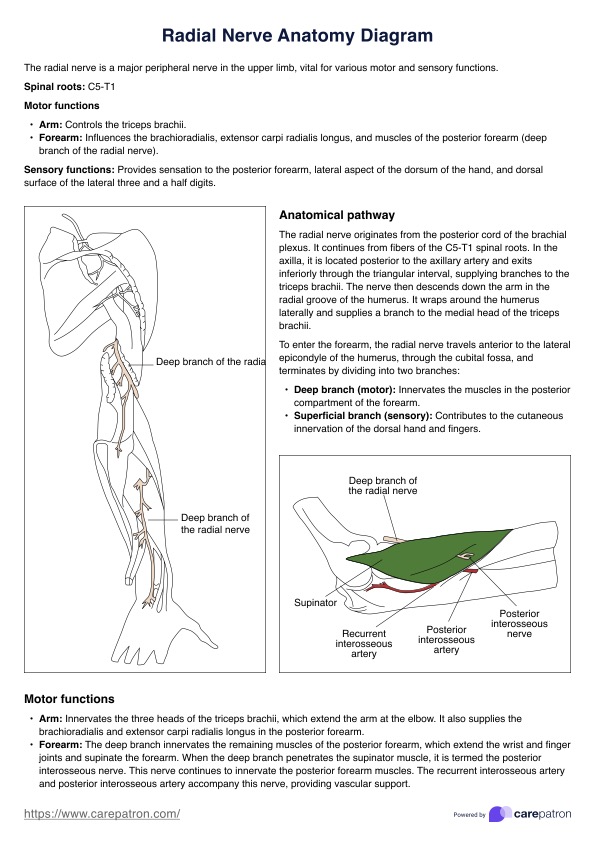Radial nerve injury symptoms include weakness or inability to extend the wrist and fingers (wrist drop), numbness, tingling, and loss of sensation in the dorsal hand and posterior forearm.

Radial Nerve Anatomy Diagram
Read our guide on the radial nerve anatomy and its function. Download our free Radial Nerve Anatomy Diagram template here.
Use Template
Radial Nerve Anatomy Diagram Template
Commonly asked questions
The radial nerve provides sensory innervation to the dorsal surface of the lateral three-and-a-half fingers.
Treatment includes rest, splinting, physical therapy, anti-inflammatory medications, and in severe cases, surgical intervention to relieve nerve compression or repair nerve damage.
EHR and practice management software
Get started for free
*No credit card required
Free
$0/usd
Unlimited clients
Telehealth
1GB of storage
Client portal text
Automated billing and online payments











